According to You: The worst engines you’ve experienced
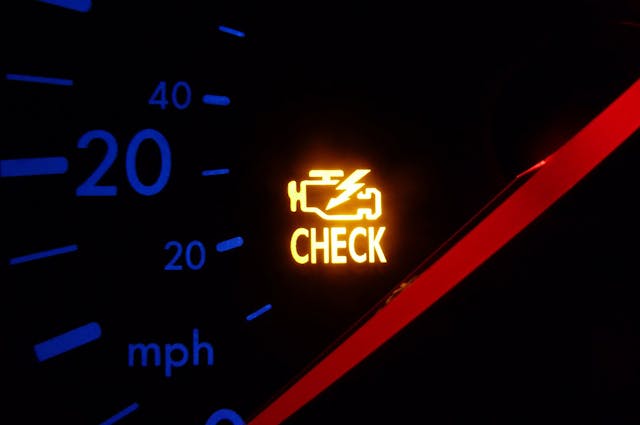
We recently asked about the worst engines you’ve experienced in your lifetime, and you certainly delivered. Perhaps too well, as the responses were overwhelming. How on earth could we cover all the bad engines made over the years? Our solution to this (wonderful) problem was thus: we thinned the herd down to responses that specifically included personal experiences that add a little more value than just the usual re-hashing of the same stories you’ve heard elsewhere.
Let’s get right to it!
The Iron Duke four-cylinder
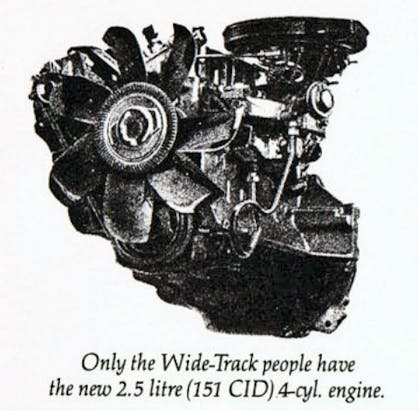
Charles A Parent said that the worst engine he ever owned was a Pontiac Iron Duke that “constantly ate Throttle Position Sensors and cracked the cast iron exhaust manifold three times.”
While the inclusion of TPS sensors suggests it might be the later TECH IV design, combining that with a four-speed shifter “that was prone to locking, in or out of gear” caused him to Lemon Law the car.
VW Type 412 1.8-liter flat-four
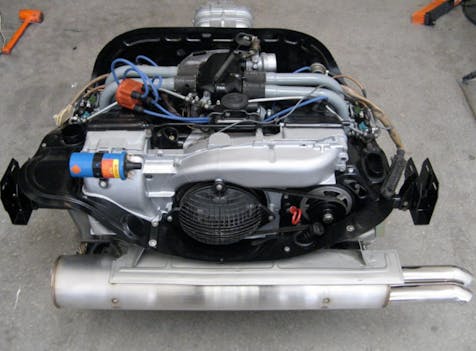
Hagerty Community user lasersailor came in strong with this one:
“I’ve got you all beat. 1679cc flat 4 in my parents 1972 VW411 wagon with a wimpy 3-speed auto transmission. Two fires caused by improper fuel injection repair at the so-called dealer in Florida. The 2nd fire caused near total immolation. Plus it was slower than a Pinto or Vega.”
Toyota 3VZ-E V-6

Hagerty Community member John Nichols gave a very balanced perspective on one of the more desirable and durable engines from Toyota, because sometimes tearing into something can turn into quite a shock:
“I recently got involved with a 1992 Toyota V-6 rebuild. The truck had a blown head gasket, the oil was full of water. Obviously these vehicles have a huge cult following of being amazingly reliable which I’m sure is well deserved.
HOWEVER when things do start to go it will cost you and assembly must be performed like a surgical operation. Parts and pieces and shrouds, crossover exhaust converters not to mention miles of vacuum lines weird little filters and of course the timing belt alignment are all part of the problem, not to mention the famous under the manifold sensor wire.
Ordinarily working on engines can be kind of fun be it a small block or an English roadster, although you have to make little tweaks often and pay attention to detail the reward of a few hours attention is measurable performance improvement.”
Chrysler 2.2-liter four-cylinder

This one might spark some controversy, as Chrysler’s 2.2-liter engine was designed specifically for a new platform and a new automotive reality. That said, Hagerty Community member David likely had an older model, but his experiences are certainly worth a read:
“As I recall memories of the early 80’s K Car with that darn 2.2 liter I feel a tension headache coming on. That engine had more use as a boat anchor, and I remember my poor dad spent more time and dollars repairing shoddy engineering design.
Crazy but true, when I got my licence and started to drive – I took that K Car to town and the engine actually fell out of the car! The front motor mount failed in the middle of an intersection. I guess even the car itself was sick of that engine and tried to spit it out.”
I reckon that A. Raymond had it even worse, but at least the dealership asked him a rather hilarious question:
“I had a Chrysler 2.2 non turbo forced upon me as a young fellow. Driving home from work in rush hour traffic, the engine decided it was time to digest itself. (It had 25,000 miles on it at the time.) The dealership accused me of ‘racing’. I laughed long and hard at the suggestion and told them I wouldn’t be doing too much racing with 88 hp.
After begrudgingly replacing the motor under warranty, I drove it another 3 months before selling it to another unfortunate schmuck. It was the worst thing I have ever had the displeasure of having to drive. I look back now and still laugh at that ‘you must have been racing’ suggestion.”
Oldsmobile Quad 4 four-cylinder

Brian was pretty sick of the Iron Duke in his 1985 Cutlass Calais, noting it was reliable but also “noisy and weak.” So imagine his delight when the Quad 4 made a splash in 1987:
“I was so excited to get one of the first Quad 4s. More power and much quieter. My love affair ended at 67,000 miles when it had a complete meltdown out of warranty. My very last GM car.”
And then we heard from Tom:
“Yes, I had the Quad 4 in a Pontiac Grand Am. Delightful, until the head gasket failed. Dealership near my work (different state from purchase point) tried really hard not to cover the failure but, after showing how much coolant I was adding, did a cheap fix. Probably tore it down to only replace the head gasket because it failed again, just out of warranty.
At that point, I was back where I bought the car, and they repaired it again, but it still didn’t seal. Any time I got in traffic, it would overheat and blow out the coolant. Tried checking the cooling system (radiator, etc.) without finding any issues. Aluminum head must have been significantly warped by that point. Finally sold that car. Too bad as it was fine as long as it was moving.”
Honda CVCC four-cylinder

Dan T Man takes us over to Honda, a brand we don’t usually hear about in this context. But he noted that the “1751 CC engine in the original Honda Accord was known to develop a head gasket leak between the #3 and #4 cylinders every 30,000 miles.” He said that it ran fine otherwise, and learned that “when the engine lost about 50 rpm at idle it was time for another change” of the head gasket.
AJD went further:
“My first brand-new car was a 1977 Honda Civic CVCC. Within 60K miles it had eaten 3 water pumps and blown its head gasket. The head gasket had been recalled but would not be replaced until blown. It really blew up nicely and the engine never ran right again.”
Buick 3.8-liter (Malaise Era) V-6

Don’t take this as a slam on Buick’s tried-and-true, 90-degree, 3.8-liter V-6. Odds are the problems that Dwayne Wertman experienced came from the Malaise Era engineering mounted to its induction and exhaust systems.
“I bought a new 1981 Oldsmobile Cutlass V-6. The engine would ping and rattle just trying to keep up with traffic. Often times it would stall in the intersection. I returned to the dealership on many occasions. It was a really good dealership, [because] after eight months they bought back and all I lost was tax and license.”
eagerdever drives home the point of this being an issue from the 1970s and early 1980s:
“I experienced oiling problems accompanied by valve train noise and the engine light in a 3.8 V-6 in a ’79 Olds Cutlass wagon. I’d stop and let the engine cool down, and then be on my way. The crankshaft finally broke in half. Because it broke on the diagonal, the engine continued to run, though poorly. A co-worker had similar problems with that engine in a Grand Prix, replaced under warranty. Another co-worker lost the engine in his Buick Skyhawk (the Buick version of the Chevy Monza). All three were due to poor oiling.”
Mitsubishi 4G54 four-cylinder with Mazda sprinkles
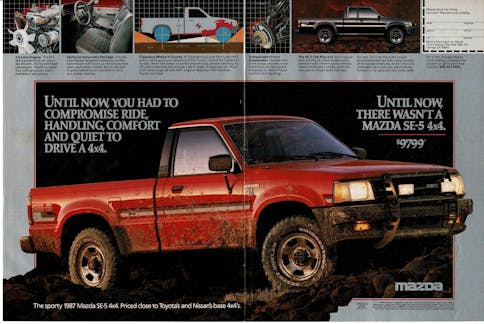
While the Buick was a victim of engineering mandates of the era, apparently Mazda shot themselves in the foot with a half-baked design made with no third-party intervention! Check out Arthur Hill’s fascinating tale of deceit:
“In 1988, as my family grew to 4, I needed to trade my Toyota 4X4 Pickup for one of the new ones with actual back seats to hold the two children. Unfortunately Toyota did not produce one until a few years later, but Mazda had a very nice looking B2600 4X4 that had back seats. This truck had the worst engine I ever had to deal with. I quickly discovered that if you really put your foot into it under a load, the engine would stutter and almost stall. Many trips to the dealer failed to solve this issue.
Finally a mechanic took me aside and admitted that Mazda rushed the truck into production without having an engine big enough, so they used a Mitsubishi 2.6 engine instead, but to make it easier to work on for their service people, they adapted their own accessories including the carburetor. Under load the only way the engine could get enough fuel was to link both barrels together all the time.
Needless to say, Mazda dropped this truck and you never see any on the road. Terrible truck with a terrible engine, but the actual Mitsubishi 2.6 engine was probably fine in their own vehicles.”
Mitsubishi 4G54/Chrysler HEMI 2.6-liter four-cylinder

No, not that Hemi. Or that one. We’re talking about the hemi-headed Mitsubishi 2.6-liter used on the Chrysler K-car and its derivatives. Chris Harshman said that the “worst engine I ever had was a 4-cylinder Mitsubishi engine in my 1982 Dodge 400. I used to joke with my friends that I could accelerate from 0-to-35 in 12 seconds.”
Subaru boxer flat-four/flat-six
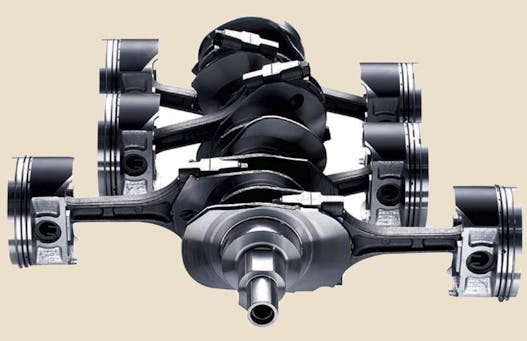
BobJ chimed in with one of the more offensive engines in modern history: the head gasket-munching Subaru boxer. But unlike other stories here, he made the same mistake twice.
“Had a 2005 and a 2010. Both blew head gaskets. Out of warranty but I complained and Subaru of America paid for half. Everyone complains about poor head gasket design & construction but I also wonder about open deck block design.”
GM 2.4-liter Ecotec four-cylinder
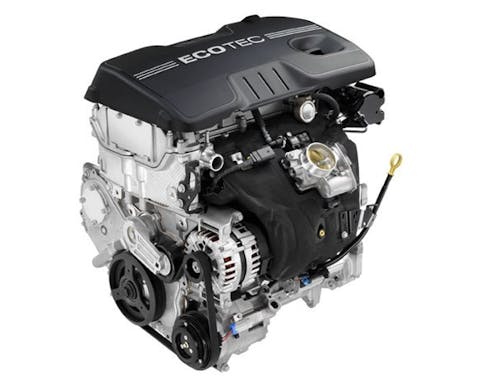
Hagerty Community member Rob keeps us in a more modern era, with a problem with the Ecotec 2.4-liter mill in his 2010 Chevrolet Equinox.
“Here’s a counterpoint for everyone who marvels at the reliability of modern cars. Launched just after GM’s bankruptcy, I should have known they probably cut corners on validation but couldn’t pass up a nice sized SUV that cracked 30 mpg.
It went through numerous high pressure fuel pumps. The timing chain tensioner went bad. The variable cam timing system went out and timing chain would slap like crazy when you started it. It had a bad heat treat on a pin in the cam shaft. Started burning over a quart of oil every 1000 miles and was rebuilt under warranty just before 50k Powertrain warranty expired. And I never got anywhere near 30 mpg on the highway.”
Ford 1.5-liter Ecoboost four-cylinder

Steve notes that his 2015-vintage, 1.5-liter, Ford EcoBoost engine is “absolute garbage compared to every other engine I’ve had the pleasure (or displeasure) of operating.” His example needed a new long block after 60,000 miles, and this helped him create a visionary notion about the EcoBoost’s promise of power and efficiency in a single engine:
“The reality is that you can’t have it all and ultimately lose out due to the extra complexity and stresses on the engine. I am not sure if the other EcoBoost variants are like this and I don’t care to find out personally.”
Holden Starfire four-cylinder

Mr. Nigel Utting takes us to the Land Down Under, reminding us that “GM Holden came up with an abominable 1.9 liter 4 cylinder named the Starfire.” The lack of power likely made Nigel’s comments far from the minority, with fuel economy numbers there were disappointing to boot:
“Based on a cut down six, this god-awful thing used to have a couple of seconds delay between hitting the accelerator and responding, a bit like downloading revs of the internet with a slow connection.”
Ford Cologne V-6

While Ford of Germany contributed greatly to the automotive landscape in Europe and the USA alike, Patrick Abbott reminds us that the Cologne V-6 wasn’t necessarily one of them. His example “regularly destroyed rocker arm assemblies and main bearings” while Richard Eaton was truly cursed with a lemon:
“I purchased a new, 1990 Ford Ranger with the 2.9-liter V6. Should have seen this coming when the transmission had to be replaced 4x for porous castings, and then both heads cracked under a recall. But then less than 50k miles after those heads they were again cracked sufficiently to turn the oil white in 1000 miles. Never again will I buy Fords.”
The Oldsmobile Diesel V-6

TerryTwoUtes picked up an example of an engine that history hasn’t looked too favorably upon: the Oldsmobile diesel.
“My parents had a ’78 Oldsmobile Delta 88 diesel, the dreaded 350 diesel engine derived from the gasser engine. After about 5–6 blown head gaskets and even one full short block replacement, it was finally traded off. Only good thing was GM trying to save face and all of those repairs were covered under extended warranty.”
Cadillac HT4100 V-8

Speaking of obvious punching bags, Hagerty Community member Coffeyclan reminds us all how low Cadillac went upon the introduction of this “High Technology” motor:
“The worst was Cadillac’s HT4100 engine. Acceleration was at a snail’s pace, the timing chain went bad twice, etc, etc, etc. I sold this car before the warranty ran out!”
Detroit Diesel “Fuel-Squeezer”

The one, the only, the legendary DUB6 threw us a curveball, thanks to his experience driving commercial trucks:
“In the mid-’70s, I drove longhaul truck for a fleet operator that leased their rigs. Most of the trucks had Cat engines and either 13 or 18 speed transmissions. As fuel prices rose during the embargo period, the leasing company offered up a Kenworth needle-nose with Detroit Diesel “Fuel-Squeezer” and 6 speed tranny to test out. Guess who was low enough on the pole to get picked to drive it for what was supposed to be 3 months?
That thing was so gutless – and the gear ratios so far apart – that even on the slightest grade, I was lucky to be able to manage 20 mph, loaded. Empty, it might get to 50 downhill, but then of course, there would be a corresponding upgrade. Fuel squeezing? Hardly. Most of the big Cats were averaging 4.5-5 mpg. This little longnose managed about 6.0 – mostly because the throttle had to be just about wide open all the time just to maintain forward momentum.
Maybe would have been fine for a flat-land operation, but in the mountainous WEST, it was pretty sad. My trips started taking up to twice as long as was projected, and several appointments would be missed every week. After about 8 weeks, the truck went back to Kenworth!”
Toyota 18R-C four-cylinder

Let’s be clear on one thing: This isn’t a slam on all Toyota 18R engines, only the California-spec motor aimed at reducing emissions. Pete notes that the 18R-C was never designed for durability:
“I am a car guy and former auto mechanic. By far the worst designed and engineered engine was a Toyota 18R-C. I have had experience with more than one, and they all burned valves every 15,000 miles even after Toyota did a factory upgrade to “fix” the problem (which it did not). I drove the car for 75,000 miles and did 5 valve jobs before I woke up and sold it for $500, it did have a good clock though.”
Chevrolet 2300 four-cylinder

Of course the 2300 motor would make the list, as there were three negative comments to this effect. It didn’t help that the early Vegas weren’t the most reliable dance partner, and NCB chimed in with a personalized tale of ownership:
“I owned a 1973 Vega GT. Yes, I’m dating myself. First, and worst car I ever owned. Engine overheated due to poor cooling system design which led to scored cylinder walls in the aluminum block. It drank oil! Bad valve stem seals and “rusting away to nothing in 5 years” were icing on the cake. MotorTrend Car of The Year in 1971!”

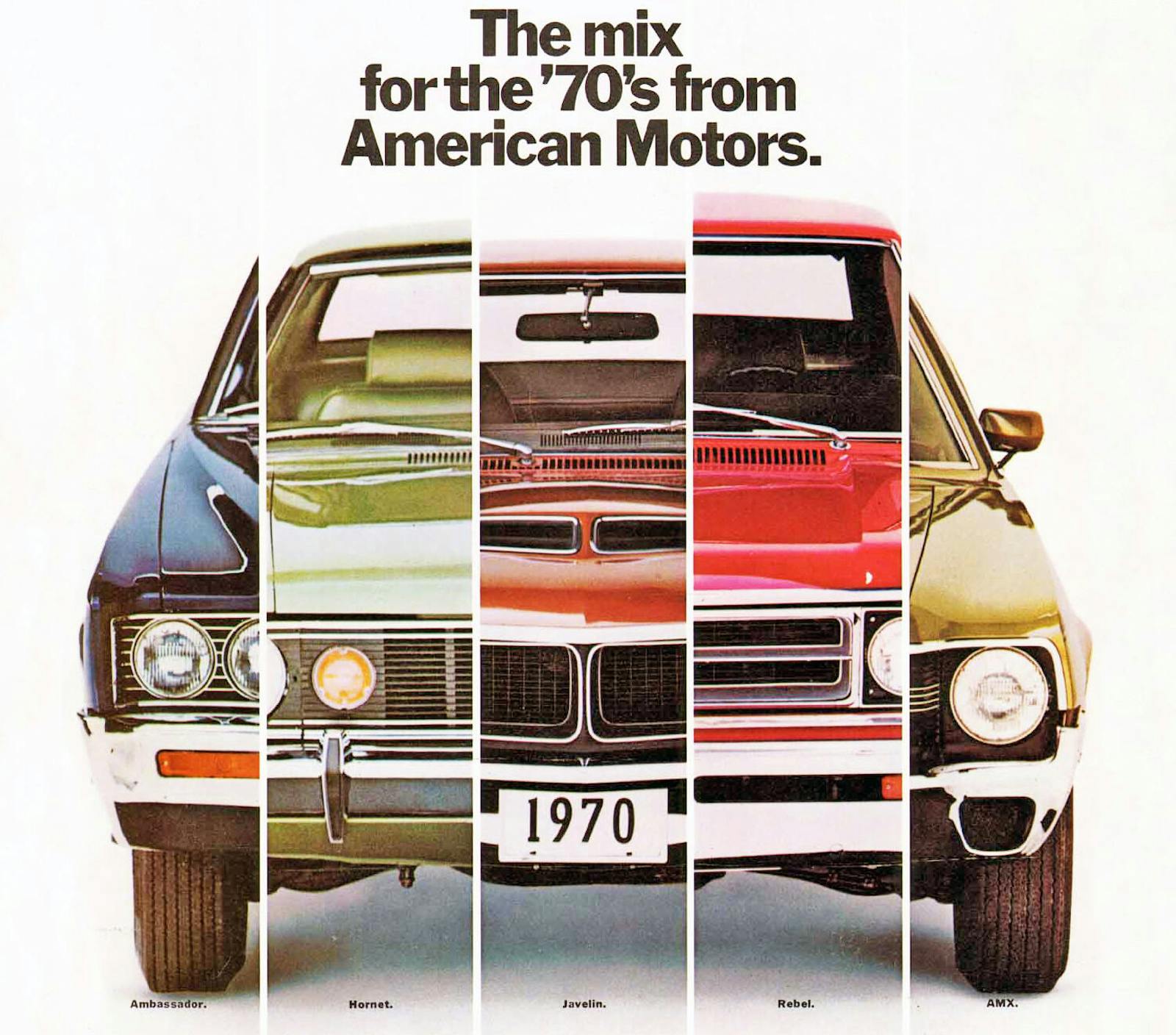
I beg to differ on the Chryco 2.2, I had two in K cars, an 81 and an 87. On the 81 I went through two clutch cables, the last being the new heavier version and had the carb rebuilt. I gave it to my sister-in-law at 195,000 KM it was retired at 300,000 with a head gasket at about 250k.
The 87 had no mechanical issues outside of a fuel pump and rad.
I’ve had several of the engines in the list. Many are misplaced, a few aren’t. The fact is that EVERYBODY makes a lemon now and then, no matter how good their quality control is — one eventually slips through. Most of these engines would perform fine if driven as expected. Some of these I’ve seen in cars that lasted despite owners trying to (usually not on purpose…) kill them! A K-Car that my high school buddy got passed is one — he drove that thing off the road a couple times, low on oil and/or water at least once each that I remember, and other abuses, but the thing wouldn’t die! The HT4100 (4.1L) just wasn’t big enough for the cars it was stuck in. 4100 cc isn’t enough for a full size 82-84 Fleetwood. It was rushed into production as well, since the 368 inch (6.0L) V-8-6-4 didn’t work out.
Speaking of engine position I’ve never been able to change all 16 plugs in the 5.7 in the Dodge truck thankfully it has low mileage but it’s more rust than truck!!
Nothing beats VW’s Wasser boxer in my 1984 Vanagon. From day one it would randomly stall. After multiple trips to the selling dealer an hour away in LA traffic I took it to my local dealer. After much frustration the Service Manager collared the VW Regional Rep into a meeting. VWoA agreed to pay for all parts & repairs if the dealer’d provide a loaner. Handshakes all around & I drove a Jetta for 17 days.
Sadly, the problem wasn’t solved. After a few more weeks of aggravation I happened to bump into the Service Manage while buying some parts (wiper blades?). He’d just come from a big VW event where he’d cornered Mr. VWoA with the inch thick work & parts orders file on the my Vanagon warranty repairs. Mr. VWoA glanced at the file, scoffed and said: “I’m not gonna pay you for THAT!” That’s right. VW stiffed their own dealer!!
The SM gave me the info for a Lemon Law attorney another Vanagon owner had used. It took a while but we got our money back. To add injury to injury, a head cracked & the tranny ate a couple bearings before we could get it to auction. Luckily the extended warranty covered it – after a judge’s order. Damn think had 52k miles on it when I kicked its backside for the last time. Even if Hell freezes over I’ll never buy another VW POS.
Oh boy! A “I had a bad experience so they must all be bad” list.
My mom liked Vegas so we had a lot of them. We maintained them and did not have engine problems with any of them.
I also owned a Pinto. I didn’t find the Pinto or Vega slow compared to the competition in its class. I also owned a Chevette. Now that was a slow car but I think it was slow mostly due to its automatic transmission.
My friends and I had no issues with the CVCC engines in our first and second generation Civics.
My wife’s 2014 Audi 2.0 gulped oil faster than my 2 stroke DKW and then it actually burned a valve. All before 100,000 miles.
Do motorcycle engines count? I could never get my Buell Blast to run reliably. I finally sold it via consignment through my local Harley dealer. Prior to that, I never should have given in to in-law pressure to sell my old Yamaha SR500, give me a reliable old kick-starter anytime.
If you want bad bike engines,
not much beats the Yamaha Tx-750.
Ford EcoSport three cylinder turbo should also win an award for poor quality. Definitely one of the worst Ford offerings of the modern era.
The Subaru flat engine is one of those situations where you have to ask why they don’t just fix the engine, or alternatively declare that the head gaskets (and surfacing) are a precautionary 100k maintenance item. I won’t buy another one, having had three. The only reason I get along with them at all is 1) I do all the repairs myself so it’s economical, 2) they used to be one of the few credible bad weather AWD systems. Now that most of the automotive brands have capable bad weather AWD, the appeal is less. The Subaru engines have two dedicated head bolts per cylinder and two shared. The Boxster flat engines have 4 dedicated bolts per cylinder and have less failures. In a Subaru, the head gasket is the reason the car overheats, in a Porsche, the head gasket fails because the cooling system overheated.
We own a 2008 Chevy HHR with the 2.4L Ecotec that we purchased used in 2012 with 48k on the clock. One of the features I liked was chain driven camshafts as opposed to the maintenance prone rubber belts that have to be replaced on schedule or else……..bent valves! We just surpassed 155K with no issues, of course I religiously change the oil, filters and the coolant on schedule and being a mechanic, nobody touches our cars but me. I was going to sell the car when it hit 150K because I was dreading replacing the water pump if it goes out. But I’m rolling the dice and going for 200K before I unload it!
I second the Subaru Boxer motor as junk. I bought a 2022 Outback Touring and in the 19 months I owned it, the car left us stranded 4 times. It got to the point that we were afraid to take it on trips – which is exactly why we bought! The service department at the dealer was clueless. Lots of electrical gremlins and a start/stop feature that felt like it would tear the engine apart every time it restarted. Such a disappointment.
Two
Worst in my experience: the four cylinder piece of crap in my 1971 Chevy Vega. Ate two head gaskets in less than 50k miles. My 2001 Cadillac with the Northstar v8…in order to replace the he starter, you have to take off the top of the motor. Damn starter is buried between the cylinder banks.
I had a 1978 Dodge Aspen station wagon with the 318 lean burn engine. You never knew when you stepped on the gas if the car would go or hesitate for a second or two! We learned never to make a left turn if there were any cars within a couple of blocks coming towards us since the car would lurch forward, then stop then finally move forward! Kept it for about a year and got rid of it, plus it never got more than 12 MPG! Got a new 1984 Chevy Wagon with the Olds 307 that would have run rings around that Aspen and gave us 20+ MPG!
A lot are V6. That’s two inline 3s’ mated. How was this ever a good idea?
I line 6 is the way to go.
My dad bought a 2002 Century new, with the 3.1 V6 – despite my recommendation to get the Regal with its 3.8. He never had engine trouble, but that engine was noisy and rather slow, compared to the 3.8 which we had in a 2002 Grand Prix GT; nor did the 3.1 get as good MPG as our 3.8. He had seen good results with his 1987 LeSabre coupe 3.8, so I am surprised he did not buy the 3.8 Regal.
Fast-forward to about 135,000 miles, when it blew the head gasket (which I have heard is somewhat common with these), when our daughter owned it. After replacement, it still ran well, but was also still noisy and sluggish. All in all, a disappointing engine.